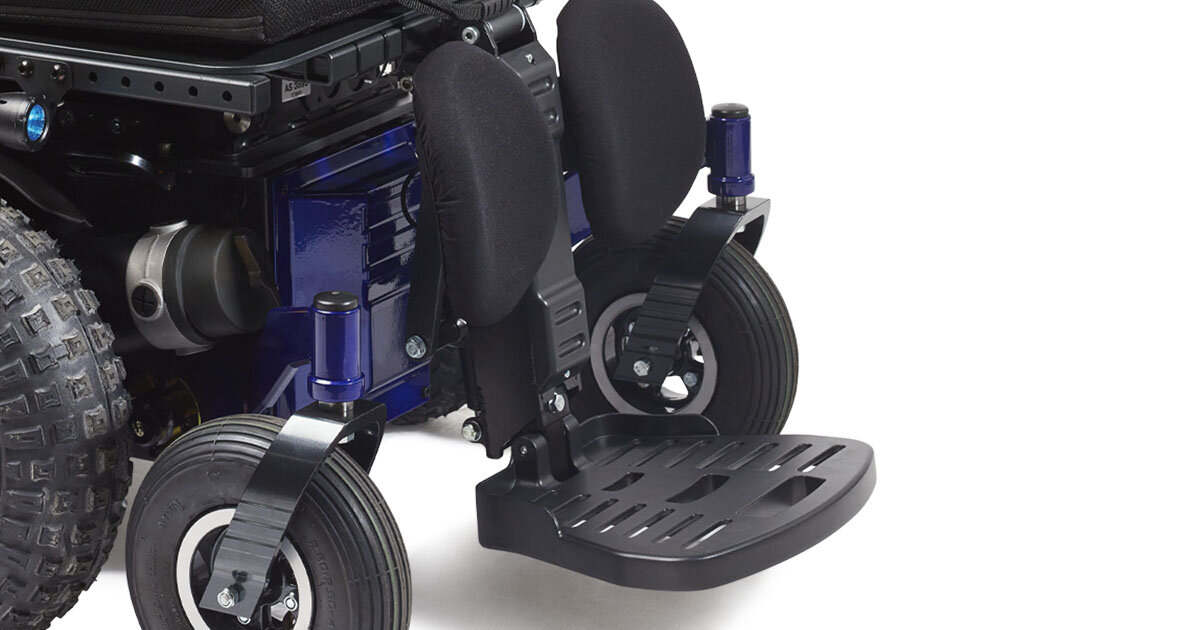The clinical benefits of Powered Elevating Legrests (ELR’s)
Wheelchair technology has evolved considerably, especially in recent years. As part of the evolution, several power and manual features can now be added to wheelchairs to address a wide variety of medical conditions.
But what exactly are ELR’s and what are the clinical benefits?
What are ELR’s?
“Elevating legrests (ELR’s) allow individuals to change the angle of orientation of the legs and/or footrests relative to the seat, extending the knee. Some legrests are articulating, which means they lengthen while also extending the knee”. (RESNA 2015)
ELR’s have become extremely useful features on wheelchairs allowing for changes in body and leg position, but their popularity isn’t something that’s new. In fact, user research by Trail, Nelson, Van, Appel, & Lai way back in 2001 found that elevating legrests were among the most desirable features on a powered wheelchair.
More than just a desired feature for users, ELR’s have also gained clinical acceptance for people who have limited ability to reposition or reorient their bodies independently.
What are ELR’s most commonly prescribed for?
ELR’s have been shown to be useful and medically necessary in addressing a number of medical conditions.
However, they’re not for everyone and a prescription is required based on clinical judgement.
With a host of applications, ELR’s can be used to address issues related to everything form from postural alignment and contractures, right through to orthopaedic deformities, oedema, spasticity, pressure management and dynamic movement.
Some of the most common prescriptions include:
Management of lower limb oedema and/or pain associated with oedema
Management of autonomic dysreflexia when used with tilt / recline
Treatment and management of lower extremity pressure injuries
Management of orthostatic hypotension
Management of contractures or orthopaedic deformities
Pressure redistribution (in combination with recline)
The clinical benefits of ELR’s
Assisting with dynamic movement
Dynamic movement is healthy for the spine with prolonged static sitting leading to a number of issues.
Prolonged static sitting without appropriate back support can increase risk for herniated discs (Adams, Green, & Dolan, 1994; Kelsey, 1975) because, when an individual slumps, his or her spine is flexed, and the anterior annulus experiences a compressive force about 50% higher than when the spin is naturally erect (Adams & Hutton, 1985).
Research by Lueder in 2005 concluded that the only effective way to endure a seated posture for an extended period of time and to be productive and functional in that posture is to change positions constantly.
Power tilt, recline, and elevating legrests can provide individuals who use wheelchairs with a means of providing and assisting with dynamic movement.
Management of lower limb oedema
Oedema occurs when the tissues or blood vessels in your legs hold more fluid than they should.
For wheelchair users, this can be a common issue as through lack of movement, the lower limbs can act as a reservoir accumulating fluid.
As part of oedema management, it’s recommended that the legs be elevated above the level of the left atrium by approximately 300mm, allowing for a reduction in pressure and increase of capillary flow. This has been proven effective by research in the Journal of Physical Therapy Science.
In fact, newer research (Fujita et al., 2010) shows that in a control group of individuals without disabilities, using elevating legrests and tilting more than 30° in combination with full recline significantly improves lower limb hemodynamic states as measured by near-infrared spectroscopy. It is important to note, however, that additional research using individuals with disabilities is needed (RESNA 2015).
Simplifying slide transfers
When an individual is independently transferring from an upright position, it’s vitally important to reduce the load on the upper body and preserve upper limb function.
This can be achieved by using recline in combination with elevating legrests. Not only does this enhance sliding transfers with a person in supine position but it can also enable the individual to be rolled more easily from side to side, to assist with dressing or adjusting garment on the lower body.
Customised ELR’s
Research has shown that elevating legrests may be useful and medically necessary to address a number of medical issues
However, they’re not for everyone and a prescription is required based on clinical judgement.
At Glide, we’re proud to be a trusted local manufacturer of wheelchairs with the option for customised ELR’s. Contact our team to find out more about our ELR options and our range of Australian-made wheelchairs and spare parts.

